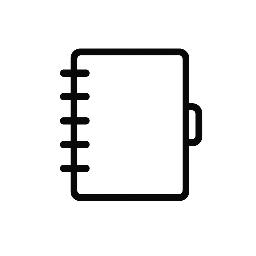Trichotillomania is a disorder characterized by the compulsive urge to pull out one’s hair, often leading to noticeable hair loss and emotional distress. Effective treatment combines behavioral therapies, medication, and support strategies tailored to the individual’s needs. The most common and effective treatment for trichotillomania is cognitive-behavioral therapy (CBT), specifically habit reversal training (HRT), which helps individuals recognize and change their hair-pulling behaviors.
Medications, such as selective serotonin reuptake inhibitors (SSRIs) or other prescribed drugs, may be used alongside therapy to manage underlying anxiety or depression. Support groups and self-help techniques also play a role in maintaining progress and coping with the condition. Understanding these treatment options provides a clear path for those seeking help with trichotillomania.
Evidence-Based Treatments for Trichotillomania
Effective treatment for trichotillomania include psychological therapies and medication. These approaches aim to reduce hair-pulling behaviors and address underlying emotional triggers.
Cognitive Behavioral Therapy Approaches
Cognitive Behavioral Therapy (CBT) helps individuals identify and change thoughts that lead to hair-pulling. It focuses on recognizing urges and developing coping strategies to manage stress or anxiety.
CBT sessions often involve tracking triggers and practicing alternative behaviors. Patients learn to challenge negative beliefs about themselves, which may reduce the compulsion to pull hair.
Research shows CBT can significantly lower hair-pulling frequency and improve emotional well-being. It is usually delivered over several weeks by trained therapists.
Habit Reversal Training
Habit Reversal Training (HRT) is a structured behavioral therapy that targets the hair-pulling habit specifically. It teaches awareness of pulling behaviors and introduces competing responses.
Patients learn to substitute hair-pulling with less harmful actions, such as clenching fists or squeezing a stress ball. This technique leverages self-monitoring and stimulus control to reduce episodes.
HRT is well supported by clinical trials and is often combined with psychoeducation to help sustain improvement. Sessions typically last 8 to 12 weeks.
Pharmacological Interventions
Medication is prescribed when behavioral therapies alone are insufficient. Selective serotonin reuptake inhibitors (SSRIs) are commonly used to reduce anxiety and obsessive symptoms.
Other options include N-acetylcysteine, which may modulate glutamate levels involved in compulsive behaviors. Some patients respond to antipsychotics or mood stabilizers in more severe cases.
Pharmacological treatment requires careful monitoring for side effects and effectiveness but can be a valuable part of a comprehensive plan.
Supporting Recovery and Long-Term Management
Managing trichotillomania involves a combination of practical daily actions and seeking specialized care. Consistent efforts in habit management and emotional regulation are essential to sustain improvement.
Self-Help Strategies
Individuals can benefit greatly from structured self-help methods. Keeping a journal to track hair-pulling episodes helps identify specific triggers such as stress, boredom, or certain environments. This awareness supports targeted interventions.
Using replacement behaviors is effective. For example, squeezing a stress ball or using a fidget toy provides an alternative hand movement. Setting small, achievable goals, like reducing pulling by 10% weekly, creates measurable progress.
Environmental adjustments also assist in minimizing urges. Wearing gloves or hats during high-risk times can serve as physical barriers. Practicing relaxation techniques like deep breathing or mindfulness can reduce anxiety that often precipitates pulling.
Professional Support Services
Professional treatment often includes cognitive-behavioral therapy (CBT), particularly habit reversal training (HRT), which helps patients develop competing responses to hair-pulling. Regular therapy sessions facilitate skill-building and accountability.
Medication may be prescribed in cases where anxiety or depression coexists with trichotillomania, often involving selective serotonin reuptake inhibitors (SSRIs). However, medication alone is seldom sufficient without behavioral therapy.
Support groups provide a space to share experiences and coping strategies. These can be in-person or online, offering ongoing encouragement and reducing feelings of isolation. Combining multiple professional supports tends to improve long-term outcomes.


Leave a Reply